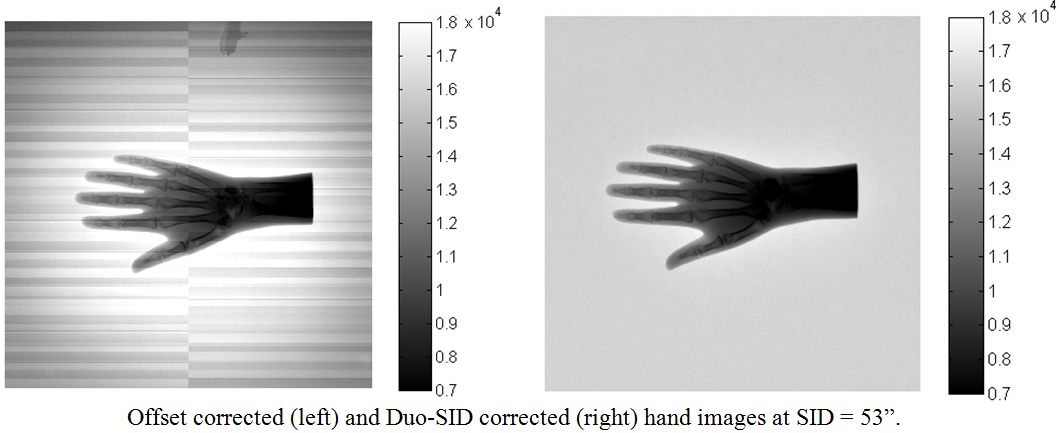Rεςεαρch
42.81675,-73.926742
Heel Effect Adaptive Flat Field Correction
[paper]The anode heel effect is a direction-dependent variation of the intensity of X-rays emitted by the anode. It renders large-scale background non-uniformities in digital radiographs, which appear as artifacts that interfere with correct diagnosis and assessment of diseases. The heel effect varies as the source-to-image distance (SID) changes. Conventional offset/gain correction methods disregard this SID-dependent characteristic, and treat it as part of the detector exposure response non-uniformity. Consequently, the residual non-uniform background appears in the corrected radiographs when the SID settings for calibration and correction differ.
We formulate a Duo-SID projection model for digital X-ray detector gain correction adapted to SID-variant heel effects. Our approach directly analyzes system gains calibrated at the admissible minimum and maximum SIDs, resulting in an SID-invariant detector gain. An optimal system gain is predicted at any SID by combining the detector gain and heel effect obtained using the projection imaging principles. This method decreases the correction error of conventional techniques by approximately 80%. It is a potentially valuable tool for pre-processing digital X-ray images for improved mammography, chest and cardiac radiography.
